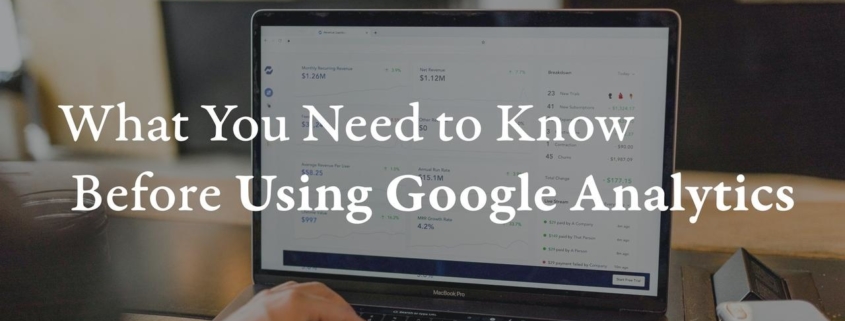What You Need to Know Before Using Google Analytics
An Introduction to Google Analytics
Analytics matters, what it can do for you, why it’s critical for business success, etc. Now it’s time to get critical.
What exactly is Google Analytics and how do you get all that amazing data out of it?
Let’s dive in.
To start, here are 3 acronyms to remember:
- GA = Google Analytics
- SEO = Search Engine Optimization
- SEM/Paid Search = Search Engine Marketing
Before I go any further, I’ll include a side note for anyone who’s reading this book to learn how to stalk or otherwise mine personal data: Google Analytics doesn’t track personal information. What it gathers is known as non-PII data, which stands for non personally identifiable information. So, when I say that GA can tell you where your visitors live, what that means is that it can give you the breakdown of geographical information. For example, it can tell you that in July, 17% of your website traffic originated from the New York City area. It cannot tell you the names, addresses or any other potentially identifiable information about your visitors.
So, what is Google Analytics?
It is a free website analytics service created by Google, following the acquisition of a company called Urchin in November 2005. It gives insight into how users find and use your website, as well as non-PII demographic information.
As of this writing, GA is the most used web analytics tool in the world. With GA, you can track ROI for your online marketing and gather intel to effectively boost the ROI of future campaigns. The building blocks of GA reports are dimensions and metrics. Dimensions are the attributes of your data and metrics are the quantitative measurements for those dimensions. The main reason that Google Analytics is so popular is because it is a state-of-the-art tool. It is also, as of this writing, absolutely free, and when it comes to functionality, it can track almost anything that is connected to the internet, from eCommerce platforms, to mobile apps, to POS systems and beyond. It is also incredibly user-friendly and compatible with multiple other Google tools.
What You Need to Know Before Using Google Analytics
Like nearly everything else in life, GA requires you to have a Google Gmail account (which is also free). So make sure that you have that before you start.
Once you’ve got your Gmail account and have created your GA account, note that GA will only be able to track pages that have the GA tracking code embedded in them. If you want to track your whole website, every single page will need to have the code embedded. This is very easy to do and there are many tutorials to be found online. If you have a website administrator, it’s something they should be able to do within minutes. It should also be set up so that anytime a new page is created (a new blog post or landing page, for example), the GA code is automatically embedded in that new page. This, too, is very simple to do, and we’ll get to the how-to shortly.
To learn more about Google Analytics and Web Analytics.
Get your copy of https://www.amazon.com/Secret-Capitalizing-Analytics-Approach-Beginners-ebook/dp/B07QKPY4K3



